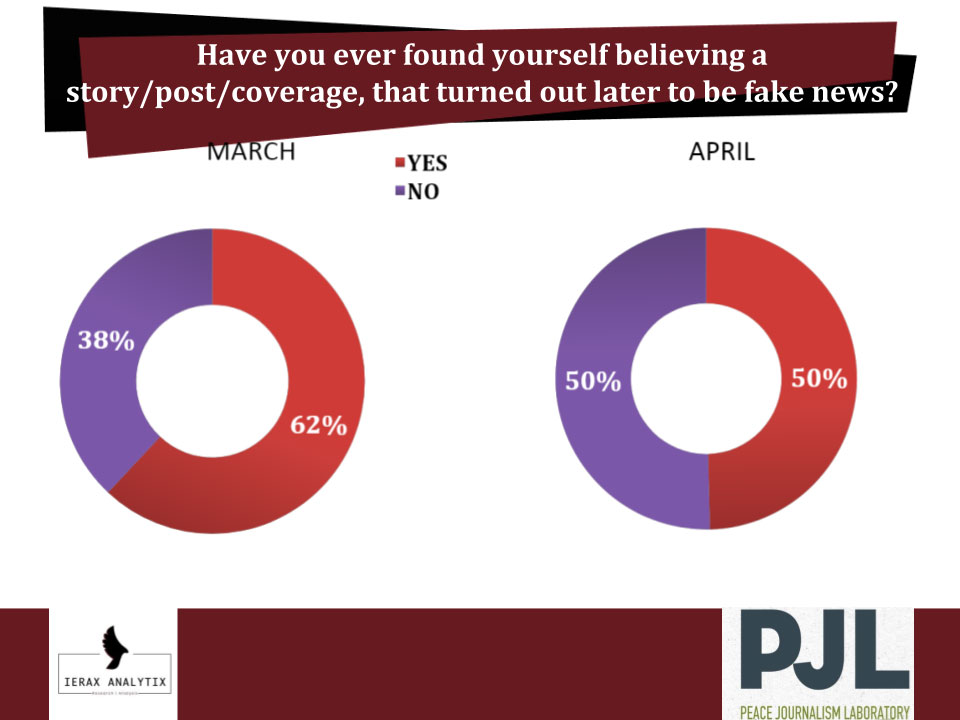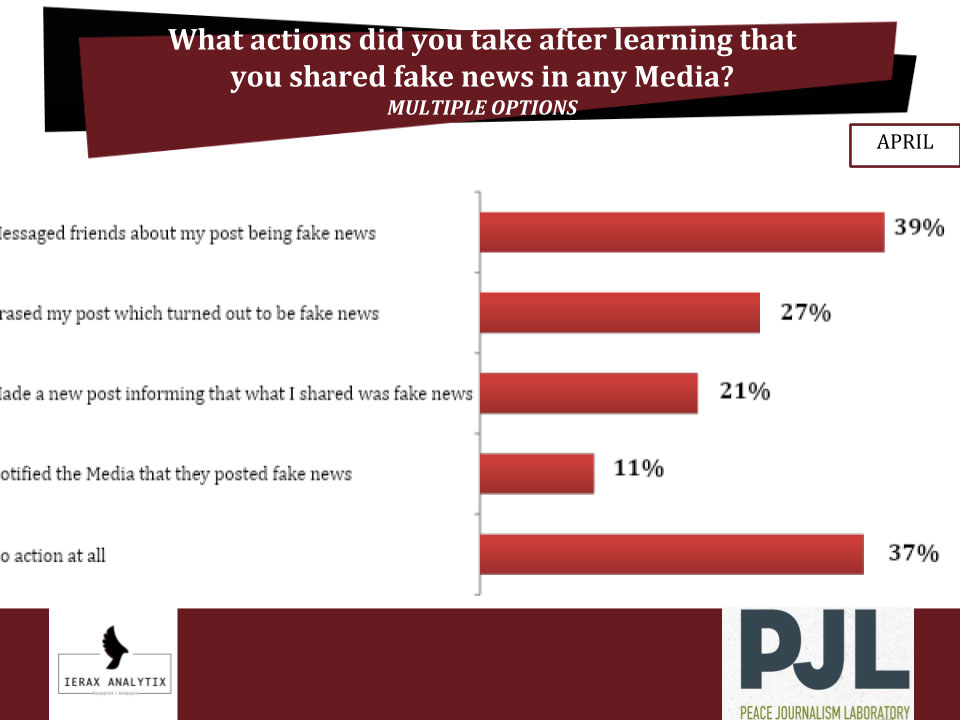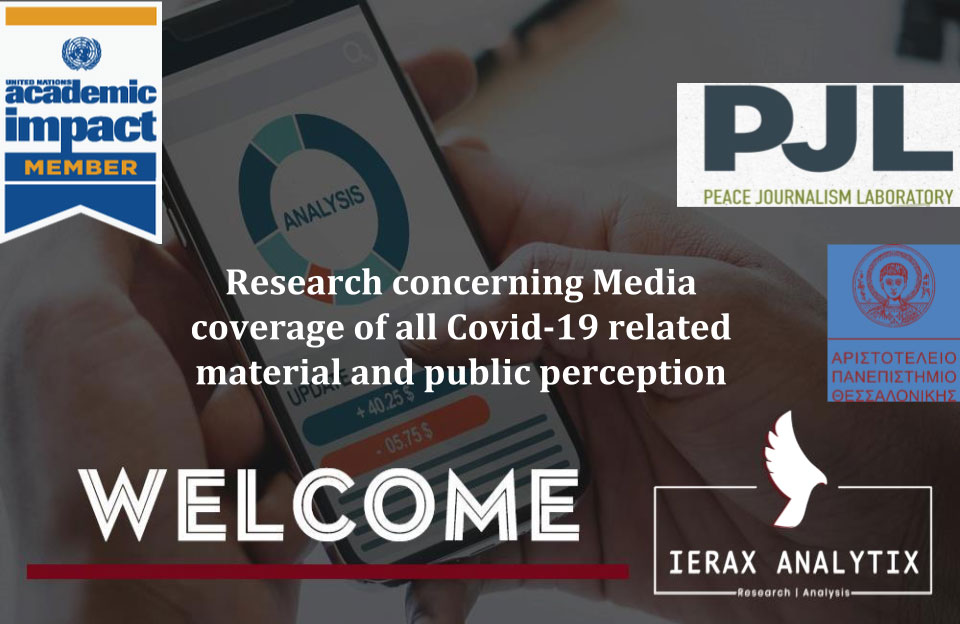Peace Journalism Lab Department of Journalism and Mass Media of Aristotle University of Thessaloniki and member of the UN Academic Impact, in collaboration with Ierax Analytix conducted, two-phase research (middle of March and middle of April respectively) on how people are informed during the pandemic of Covid-19, what are the factors that influence public communication, disinformation and trust in Media.
It is the first research in Europe that examines media-audience and public communication in three stages, before the crisis, at the first stages of the pandemic crisis and at the loosening of the mitigation measures. The sample is 2.600 participants.
The findings of this particular survey reveal information of critical importance concerning the above issues, analyzing and enlightening it further. At the same time, answers are given in essential topics such as:
- – Have the citizens increased or decreased the time spent on information during the lock-down?
- – Why do they avoid being informed nowadays?
- – Have they been affected by any news that was later proven fake, and how did they cope with that?
- What is the effectiveness of public communication campaigns?
- Whom they trust, and what media they choose to be informed?
As the results of the first meta-analysis revealed, misinformation continues to be an essential issue, as 62% stated that they had been affected by fake news. In contrast, during the second period, the same percentage is 50%. This results from the element that a major source of news this period are scientific ones.

A unique and very important element of this research that comes to build and contribute in our understanding of the fake news phenomenon is that 37% of the respondents’ state that they have taken no action when they come across with fake news, the highest rates 55% recorder in the more dynamic ages between 25-34. At the same time, 39% informed friends and familiar-ones, 27% took down or deleted their post, 21% uploaded a post that the news is fake, and 11% sent a message to the media to inform them about it.

The second meta-analysis depicts the differences in citizens’ opinions about the quality of information and the media that they choose to be informed about the latest news on the ongoing crisis of the coronavirus.
In the information area, the news sites (66%) and the TV (57%) dominate. TV holds the leading choice as the percentage of the people who are informed from television is doubled compared to the first phase of this survey.
Regarding the crisis coverage throughout the second phase of the survey, the phenomenon of misinformation and disagreement to the coverage approach chosen were visible. A crucial portion of the respondents, touching a percentage of 40%, answered they avoided getting informed, citing the above-mentioned being the reason.
The time spent by people for their information, during the first phase of the health crisis, considerably increased compared to the percentage before the crisis. Still, at the same time, it displayed a decreasing rate during the second phase (April).
It is important to note that the trust towards the media increased to some extent compared to all findings that have been surveyed before the crisis, as 36% stated that they considerably trust the media. Before the health crisis, the same percentage, in other surveys, was lower, that is to say, 22%. (survey of Reuters Institute for the Study of Journalism, Oxford University).
The trust rate towards the radio is increasing (2.36%), as well as towards the press (2.23%). In contrast, it is very high concerning the news sites (2.67%) (average of answers with 5 as the perfect score).
Furthermore, an important element of our survey is that people trust 77% in the first phase of the survey and 80% during the second phase, scientific sources that are an increasing and important element of how they are informed during the crisis. In addition, 85% have followed public communication campaigns regarding the pandemic while 82% were also favor to communication campaigns from public figures. The demand for scientific information is a consequence of the nature of the crisis, of the uncertainty it causes and the need for valid information. The results of this survey indicate that the media and the practice of journalism needs to adopt a new spirit, giving particular emphasis in a more technoscientific, trustworthy, and valid information process




